The chapter includes a consideration of ‘concept mapping’, a simple and useful technique which can be used for planning lessons
The chapter can be used for diagnosing aspects of how learners structure their knowledge, and as a useful study and revision tool.
Concepts take their meanings within knowledge structures
One key aspect of looking at the meaning of a concept is an awareness that it is difficult to consider particular concepts in isolation. When we define concepts, we usually do so in terms of other previously learnt concepts. It is clear, then, that the meaning of a single concept depends upon how we understand it in relation to other ideas. In other words, in order to understand what we mean by a chemical concept, we need to see how it fits into a wider structure of ideas. We need to help students ”make the connections” to develop their own conceptual frameworks.
The conceptual structure of chemistry
A curriculum subject such as chemistry is not a set of isolated facts or principles. Chemical knowledge is structured. Not every chemistry teacher or chemist would agree on precisely what that structure is, and, anyway, it is a fluid structure. The structure of the subject now is different from 50, 100 or 150 years ago, as the subject has developed.
For example, the ‘traditional’ division of chemistry into inorganic, physical and organic branches has become less significant in recent years, with much important work done across divisions and even across the boundaries of the discipline.
The structure of chemistry has shifted, but it no doubt exists. This is unavoidable, due to the nature of knowledge itself.
To some extent, we can see chemical concepts as hierarchical, starting with the most basic definitions and distinctions. So the notion of substance is fundamental - and allows us to define what we mean by chemical reactions, and pure substances are divided into elements and compounds. The idea that matter is quantised rather than continuous is another key tenet of the subject. Once we see matter in this particular way, a key concern becomes how the particles are arranged, and how they are held together and how rearrangements may occur.
Content analysis
Whenever a teacher has to teach a new topic, it is sensible to undertake a form of content analysis, which:
- Determines the precise ideas that need to be covered.
- How they are inter-related.
- What other concepts will be needed to teach the new ideas.
The material to be covered is often laid down in curriculum documents or in a school or college’s schemes of work. The teacher will need to decide in which order to introduce ideas, which is why a logical analysis of how the concepts are related is important. However, it is just as important to consider the pre-requisite knowledge that is being assumed in teaching the topic.
This is because:
- Sometimes students do not hold the assumed prior knowledge (or hold alternative distorted versions of it), and so it is important for the teacher to check that students have an acceptable understanding of these ideas before setting out on the new exposition.
- The links with prior knowledge need to be made explicit - sometimes these ideas are so familiar and obvious to the teacher that they are not emphasised enough for the students to spot them. This can lead to the new learning lacking ’anchors’ in existing knowledge, and floating away to become isolated icebergs of knowledge, or breaking up to give conceptual flotsam with no coherence or utility to the student, and conceptual jetsam washing up to form inappropriate links with other islands of knowledge.
- The new topic provides opportunities to reinforce many key ideas from previous teaching by the drip-feed approach.
Introducing concept mapping
Before students can be asked to produce concepts maps, they need to appreciate the idea of a concept map itself. Some students are likely to have met concept maps and related diagrams (’spider diagrams’, ‘mind maps’) before - but in some classes this will be a novel idea to at least some students. It is not appropriate to expect students to cope with the demands of a new way of representing information, and to think deeply about the topic to be mapped, so some familiarisation or practice will be needed.
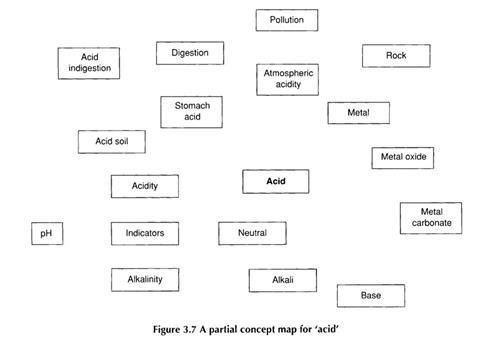
The instructions for the students show them how to develop the map by adding connections. When this exercise was carried out in schools to pilot the materials, it was found that some students were certainly able to make relevant and sensible suggestions for the logical connections between concepts.
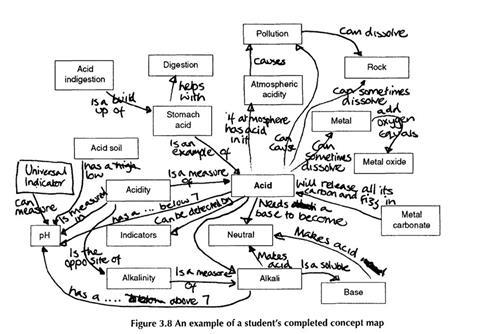
Although students may well miss some significant connections, and may use less precise or technical phrasing than the teacher would prefer they can also demonstrate considerable knowledge and understanding.
The example map shown above is from a student in a group of 12-1 3 year olds.
This individual added a new concept - ‘Universal Indicator’. Other students in the group added other concepts such as ’salts’, ’acid rain’, ’calcium carbonate’ (connecting ’metal carbonate’ to ‘rock’), ‘carbon dioxide’, ’hydrogen’, ’water’, and ‘phenolphthalein’.
As well as adding new concepts to the map, students may also suggest valid connections which were not expected.
For example, among the suggested links from a student in a group of 13-1 4 year olds were:
- Digestion - pollution (’produces methane’).
- Pollution - metal (‘produces smoke when extracting’).
- Metal carbonate - metal oxide - metal (’product of extraction’).
Notes
For the full version of this chapter, see downloads below.
Downloads
The structure of chemical knowledge
PDF, Size 1.28 mb
Websites
Additional information
These PDFs have been taken from the popular book, Chemical Misconceptions : Prevention, diagnosis and care: Theoretical background, Volume 1, by Keith Taber

Chemical misconceptions
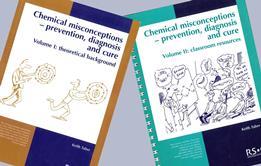
Discover classroom strategies and activities to tackle common misconceptions among students in chemistry, and explore the theory behind different approaches.
- 1
- 2
- 3
- 4
 Currently
reading
Currently
reading
The structure of chemical knowledge
- 6
- 7
- 8
- 9
- 10
- 11
- 12
- 13
- 14
- 15
- 16
- 17
- 18
- 19
- 20
- 21
- 22
- 23
- 24
- 25
- 26
- 27
- 28
- 29
- 30
- 31
- 32
- 33
- 34
- 35
- 36

















































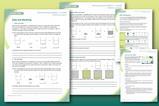
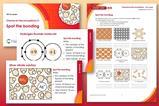
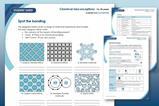









































No comments yet